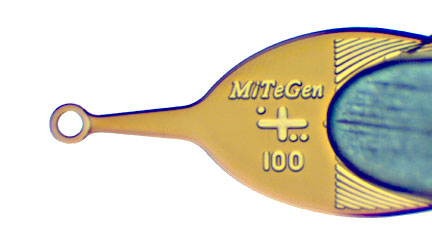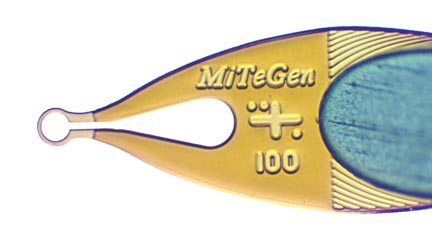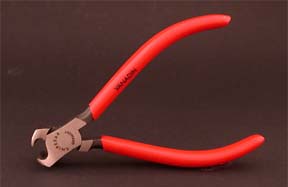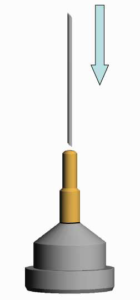TECHNOTES
Using MicroMounts™ and MicroLoops™ for Small Molecule and Inorganic Crystallography
MiTeGen’s products are much easier to use and give less background scatter than glass fibers and other mounting tools common in small molecule crystallography.
An important first step is to select the proper MicroMount™ or MicroLoop™. Choice one with a sample aperture size slightly smaller than the crystal size. This will help minimize background X-ray scatter.



Cut the stainless steel rod (if necessary) to a desired length using our cutters or other cutters designed for spring-temper steel.
Insert the stainless steel rod of the MicroMount™ into a goniometer base (our B4 base is most popular for small molecule applications) using a small amount of, e.g., epoxy, glue or Dow-Corning #976V high vacuum grease to hold it in place. Alternatively, use one of MiTeGen’s glue-free reusable goniometer bases. For easier handling, attach the base to a magnetic wand. The rod can also be inserted into a 0.7 mm mechanical pencil.

If mounting samples from solution, please read our notes for macromolecular crystallography and mounting small crystals.
- To make the ethyl cellulose/ethyl acetate mixture:
- Mix 300 micrograms ethyl cellulose in 75 ml of ethyl acetate.
- Slowly heat the mixture (with boiling chips) to the boiling point in a fume hood, and boil gently for 5 minutes. Let cool to room temperature. Be sure to read warnings about each component. Ethyl acetate can be dangerous at temperatures above 77 C.
- Both components are available from many US suppliers.
Ethyl Acetate: J.T. Baker (1-800-582-2537)
Ethyl Xellulose: (Be sure to specify powder or granule form.) Island Group 516-746-2100 and Rotuba 908-486-1000
Comments or suggestions? Please contact us!
